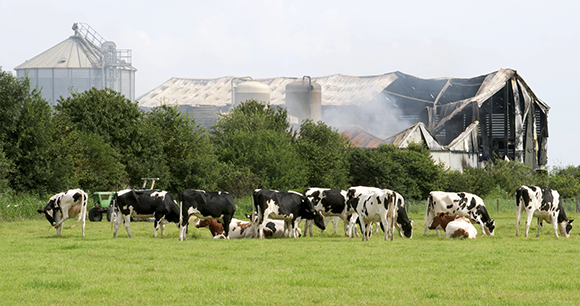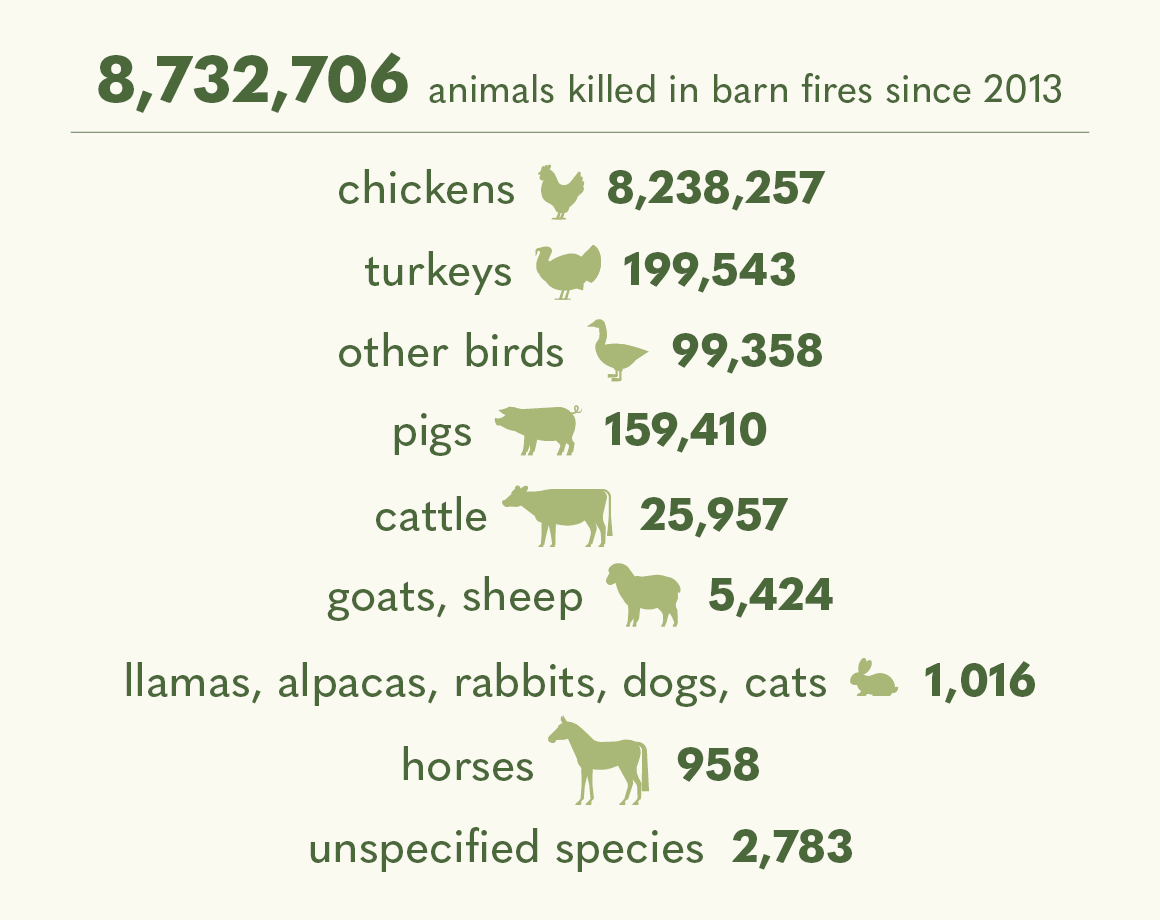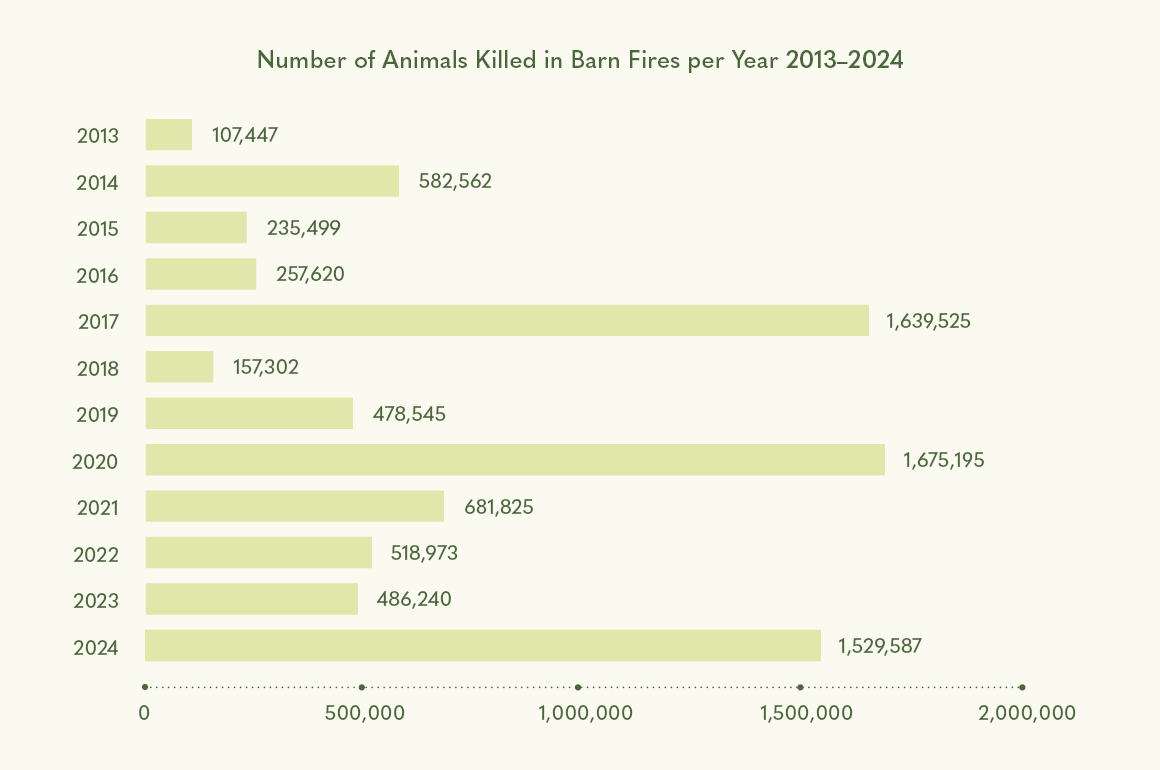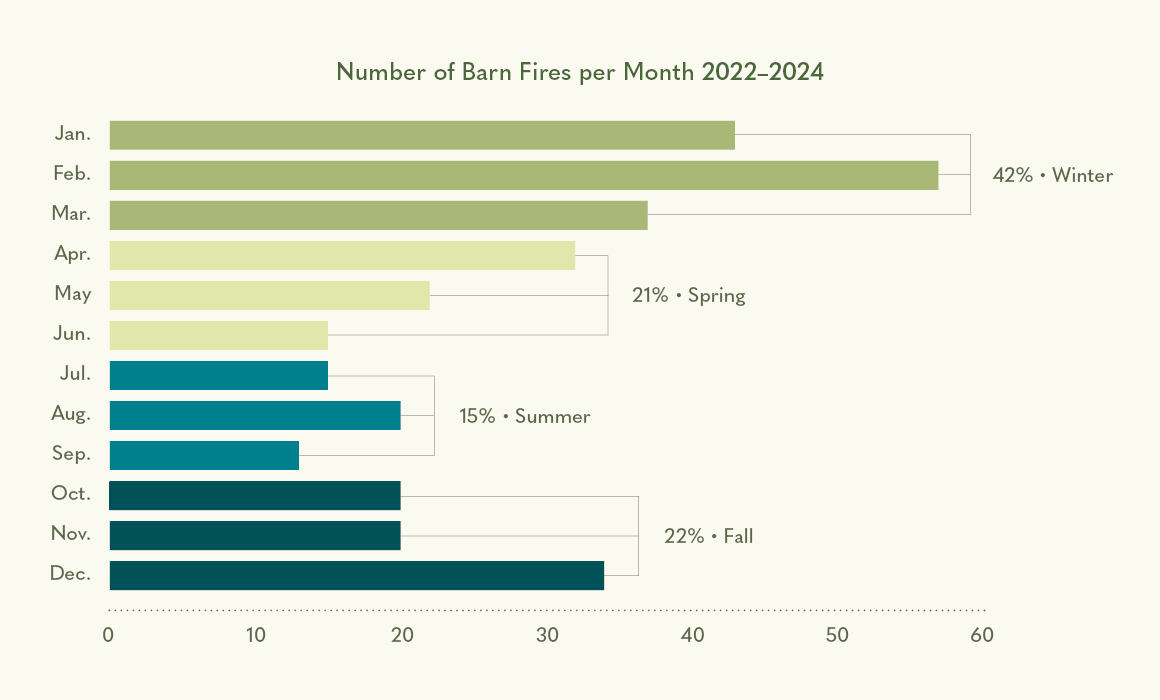
Barn fires cause immense suffering, killing hundreds of thousands of farmed animals every year. Some farmed animals die almost immediately as fires burn through the barns, while others have to be euthanized later due to severe burns and smoke inhalation.
The Animal Welfare Institute released an updated report in January 2025, compiling information on the prevalence and causes of farmed animal deaths due to barn fires during the preceding three-year period (2022–2024). During those years, over 2.53 million farmed animals perished in barn fires. Over ninety-eight percent of those deaths were were farmed birds. The high death toll from these incidents is being driven primarily by fires occurring at massive operations housing several thousand to over 1 million animals.

View the 2025 Barn Fire Statistics By State or the 2024 Barn Fire Statistics By State.

Most fatal barn fires occurred in colder states, particularly the Upper Midwest and the Northeast. New York, Wisconsin, Pennsylvania, Ohio, and Illinois had the highest number of barn fires, respectively. The amount of cold weather a state experienced appeared to be a greater factor in the prevalence of barn fires than the intensity of a state’s animal agriculture production.

While weather seemed to play a primary role in the prevalence of barn fires, this was not the case in terms of the total number of deaths reported by state. What distinguished states with the highest total fatalities is that, in most, one or two catastrophic fires took the lives of hundreds of thousands of animals at once and accounted for nearly the entire death toll. The top five states for total number of animals killed are as follows:
- Illinois – 1,200,356 animals
- Minnesota – 240,831 animals
- Delaware – 200,000 animals
- Utah – 120,002 animals
- Kentucky – 100,175 animals
Findings from the report suggest that the biggest risk factors for barn fires are malfunctioning heating devices and other kinds of electrical equipment. Out of the 328 total barn fires that caused farmed animal fatalities during the three-year period, the cause or likely cause of the incident was reported in 111 cases. In about 70 percent of those 111 cases, the confirmed or suspected cause was a malfunctioning heating device or other electrical issue. This significant percentage suggests that this equipment should be frequently checked, repaired, and replaced.

Seeing that most barn fires that caused animal deaths were due to heating devices and occurred in colder states, it is not surprising that the majority of fatal barn fires happened during colder months when there is an increased need for heating devices to keep farmed animals warm. Nearly three times as many barn fires occurred in winter (January through March) than during the summer (July through September).

No farmed animal deserves to die in a barn fire that could have been prevented. The National Fire Protection Association has developed NFPA 150, Fire and Life Safety in Animal Housing Facilities Code—a voluntary code that offers the most comprehensive level of fire protection for farmed animals while they are on farms. This code should be adopted by states and municipalities, and mandated by both third-party animal welfare certification programs and animal agriculture industry guidelines. Additionally, there are a number of steps farmers can take—from improving everyday operational protocols to investing in structural and facility renovations—to help prevent barn fires and promote fire safety. To minimize the risk of barn fires, AWI recommends farm owners implement the following fire protection methods:
Operational:
- Request annual inspections from the fire department
- Place fire extinguishers in barns
- Develop an emergency action plan
- Institute frequent fire prevention training for employees and routine fire drills
Structural:
- Create emergency lanes so facilities have multiple access points
- Install sprinkler systems
- Construct buildings—particularly, interior walls and ceilings—using fire-resistant materials
- Install on-site water storage units to assist firefighters with access to water
- Frequently check, repair, and replace heating and other electrical equipment
- Install smoke or heat detection systems